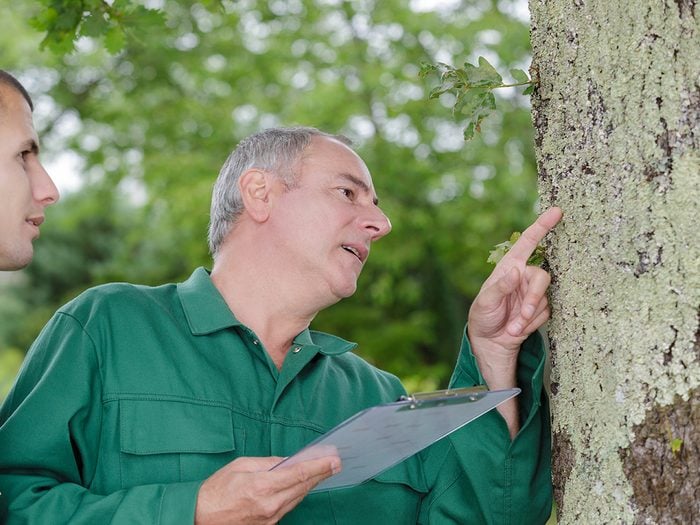
Why you need an arborist
If you’re having trouble with your trees or woody shrubs, the first call you should make is to an arborist.
A certified arborist has specialty education in trees and the latest information on how to plant, care for, diagnose, treat and remove trees. They also have access to critical safety gear and powerful tools, plus the license to apply certain chemicals, such as fungicides, to help save a tree.
Trees can be stoic. Many times when signs of distress show up, a problem has been brewing for a while. So while you can follow best practices for planting and maintaining the health of your trees, often major work—or at least specialized knowledge—is needed to prolong a tree’s life or stop the spread of a tree disease. Here are the signs to look for.
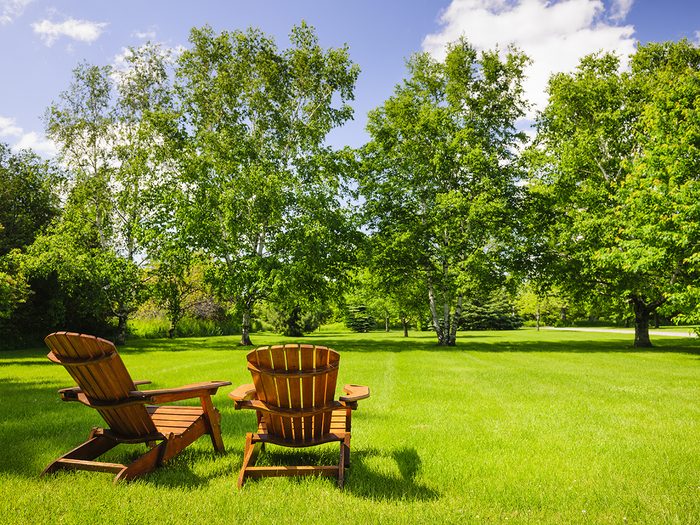
Dieback
When an arborist consults about your tree, they do a top-to-bottom assessment, so you might as well, too.
Start with the top of the tree, known as the crown. Are leafless branches sticking out of the leaf canopy? That’s called dieback, says Lou Meyer, arborist with The Davey Tree Expert Company. “(It’s) almost a sure sign that there’s a root issue underground,” he says.
Those issues vary. Experienced arborists can tell you if it’s root compaction, a fungus or poor soil conditions. If so, there are few methods to try to save the tree. This is common with silver maples, he says, but can affect many species.
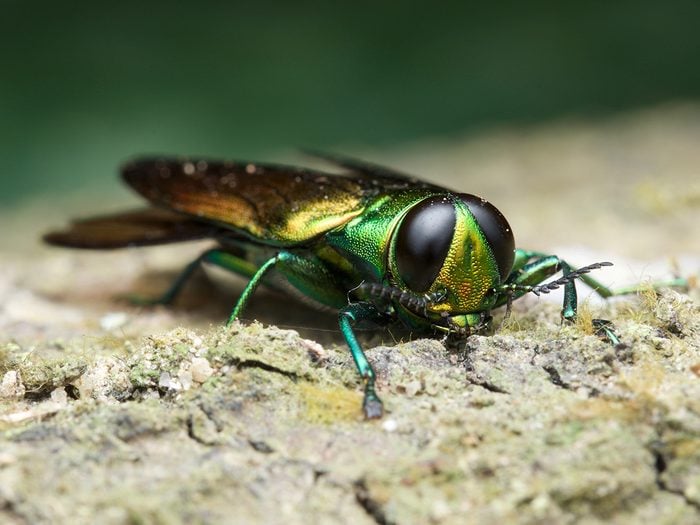
Oozing sap or sawdust
If you see sap oozing down the trunk from specific holes that resemble knife wounds, there’s a good chance you have a borer insect problem. (Note: Some trees, such as elms, ooze sap normally; it’s not a sign of danger.)
You may be most familiar with the emerald ash borer (above), which lays its eggs in the tree, lives in the cambium (plant tissue), creates tunnels inside it and then essentially starves the tree. Almost all untreated ash trees with emerald ash borer infestations will die.
Because emerald ash borers can compromise the physical structure of the tree, a professional should handle the tree’s treatment or removal. And although emerald ash borers may be the most notorious, other insects can infest a tree that will leave oozing sap, sawdust or sawdust tubes in their wake.
“Any sawdust is a bad thing,” Meyer says. That’s a reason to call your arborist.
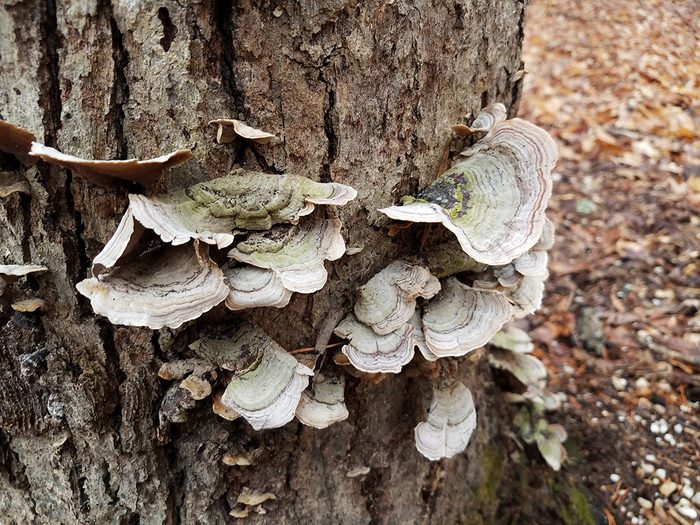
Mushrooms or fungus
If you see fungus on a tree trunk, there’s a good chance you have a decay issue. Fungus is most often muted tan in color, but can also be orange or red. “Saprophytes (a plant, fungus, or microorganism that lives on dead or decaying organic matter) feed on decay and if you see them you’ll know there is inner decay on that branch,” Meyer says.
Sometimes arborists can expertly remove limbs with the hope the decay hasn’t spread, and/or use fungicides to slow the spread. There are some species that almost always have shelf fungi on the trunk, Meyer adds, such as locust trees. So don’t immediately panic, but do call your tree specialist.
Other fungi might not look like a traditional mushroom, and vary by species. Randy Nelson, a certified arborist with Monster Tree Service, says a fungus commonly appears on blue spruces planted outside their hardiness zone. It shows up as black spots on the needles, or even as dieback.
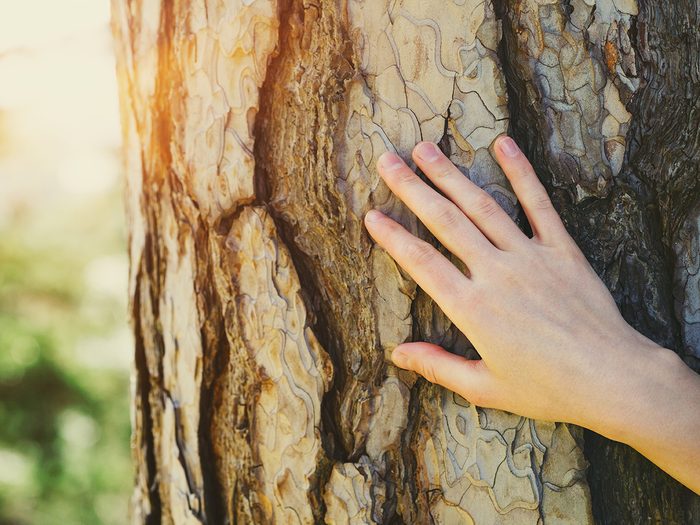
Sloughing bark
Bark sloughing off the trunk is often a sign of decay, often from a fungus, Meyer says. Some species do naturally shed their bark, such a sycamore, crepe myrtle or river birch.
If you can see silvery or white plating under the bark—a sort of scale that looks like a dead lesion—that’s a sign of a canker disease called hypoxylon.
With hypoxylon, you may also see some sap oozing down the trunk. It’s nothing you can treat yourself, and often can’t be cured. But with assessment and treatment, you may keep the tree’s healthy parts going and extend the tree’s life.
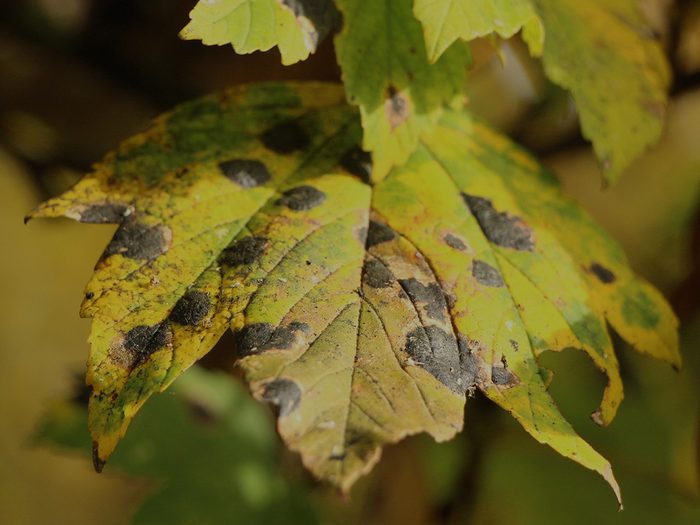
Black lesions
If a spring season is especially wet, black spots or lesions may appear on a tree’s leaves. “This is more of a fungus related to high moisture,” says Nelson.
Depending on the tree species and time of year, some systematic pruning to send the canopy out and create more air movement may help. Also, sometimes chemicals can be helpful. “This is usually more of a cosmetic issue,” says Nelson, “but it can stress the tree out if it happens repeatedly.”
Your tree might not be doomed to certain death in this case, but care should be taken to keep it healthy and prolong its natural life.
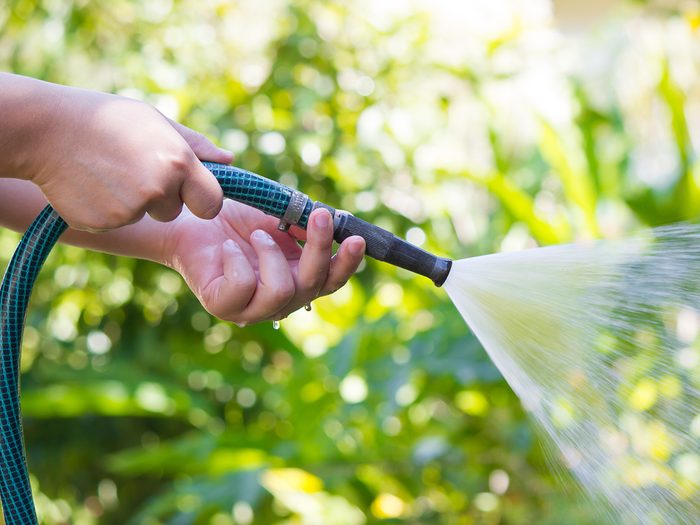
Scorching, browning or drooping
People think lawn sprinkler systems are good enough for watering trees. Often, it’s not, Nelson says, especially in drought conditions. That water doesn’t reach tree roots, and if you have turf grass it competes for that water.
He suggests using black soaker hoses. If you don’t have one, put your garden hose on a small trickle and let it soak slowly for a full day. Place it a couple of feet out from the trunk but within the dripline of the tree (from the trunk to the outer edges of the trees branches), rotating evenly around the tree.
“Trees on average, need an inch of water per week,” Nelson says. “Sometimes trees don’t show scorching, browning or drooping leaves or branches immediately, but they show up next year or the year after that, especially on bigger trees.”
Smaller or younger trees may show stress signs within the same season. Trees and leaves can also droop when they’re overwatered, so keep a careful watch on which one may be causing the problem.
Find out why you should never throw out an old garden hose.
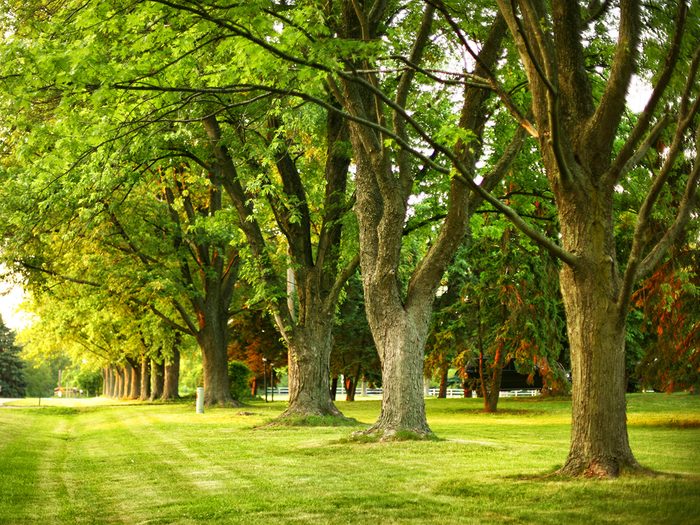
Flagpole trunk
If your tree trunk doesn’t flare where it meets the ground, so it looks like a telephone pole or a flagpole, your tree may have been improperly planted. That can cause issues like girdling roots that grow in a circular or spiral pattern around the trunk or at or below the soil line, gradually strangling the trunk. That considerably shorten the life of your tree.
“You want the root flare at the bottom just above grade so you can see that swelling at the base,” Nelson says. “If you catch it, arborists can excavate soil away and provide root pruning.”
Looking for more great landscaping tips? Find out how to get rid of crabgrass once and for all.
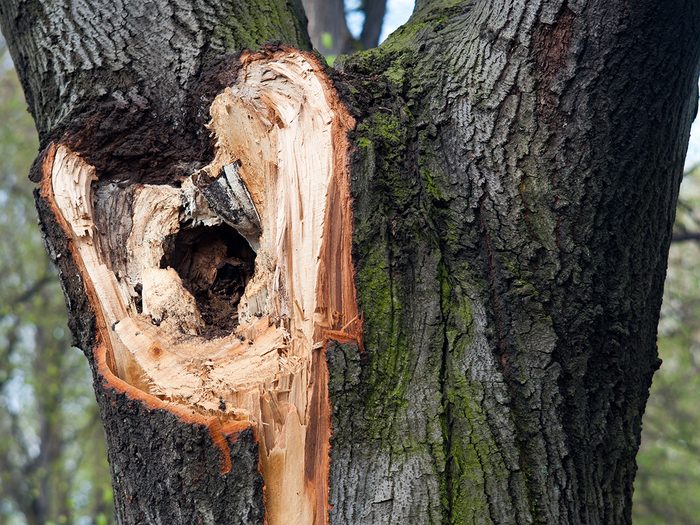
Trunk wounds or cracks
Trees often take a beating. Think about that boulevard tree someone backed into trying to park, or the courier truck repeatedly striking a branch as it makes deliveries down the street. “That’s an issue and an opportune entry place for disease,” says Meyer.
This is a particularly hot topic with deliveries during the pandemic: Limbs struck once a week now may get hit four to five times a day. That can cause structural damage, impair the tree and eventually imperil people and property if it comes loose.
Likewise, storms can deliver blows to an otherwise healthy tree. Big cracks in the trunk or bark are signs of structural damage that need to be addressed.
Lastly, horizontal cracks are a red flag as well. These indicate the wood fibres are breaking and cracking, and the tree might fall.
Don’t miss these jaw-dropping photos of the world’s most beautiful trees.
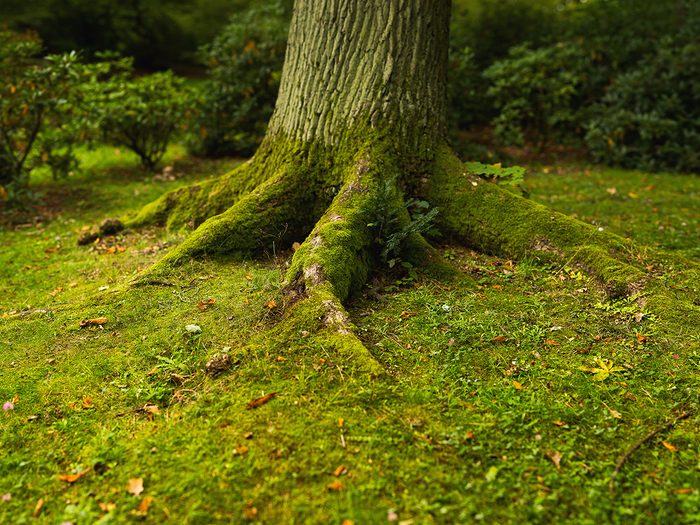
Heaving roots
Exposed roots can be a problem. While some species’ root systems hang out near the ground’s surface, Meyer says most aren’t that visible. Heaving roots can be a sign that the tree doesn’t have enough space to grow.
Signs of heaving soil, which Nelson says often happens after a heavy rain or dangerous weather, are also a reason to call an arborist. Sometimes smaller trees can be uprighted or staked, but an arborist can assess whether the tree is stable or needs to come down.
Next, find out 30+ yard tool hacks that will make your life so much easier.